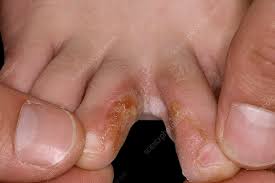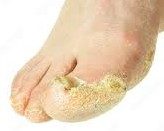Has the cold got your feet feeling itchy?
What Is The Winter Itch?
The winter itch, or to use the medical term, asteatoic eczema, is a type of dermatitis that affects you mostly during the colder months. It
is common on any part of your body, but mostly occurs on your legs and the tops of your feet.
What Causes It?
The “winter itch” is predominantly caused by the changes in weather. As the Autumn and Winter months bring in colder temperatures, the
heaters go on, the thermostat is turned up and the radiators are running more frequently. This artificial environmental change reduces the
humidity in the air causing a dry heat which ultimately dries your skin out.
However, there are a multitude of other common causes for dry skin:
Increasing age
Hormonal changes i.e. menopause
Medication Sun
Exposure
Too a hot a shower Zinc Deficiency
Sun Exposure
Excessive bathing and showering of skin
Insufficient rinsing of soap, bubble baths and shower gels from skin when showering
Physiologically, these factors cause your skin to reduce its natural moisturising barriers which can be harmful. Interestingly, 29% of
working adults between the ages of 21-67 years old have clinically dry skin. This increases to 90% for the over 80’s population.
Affects 90% of the population over 80 years old!
How to Manage Dry Skin?
It is important to manage dry skin well to ensure it continues to provide a protective barrier against harmful pathogens. Dry skin may
allow microbes to invade the tissue through small cracks and fissures, bypassing this protection. A variety of skin
infections can result:
Verrucae

Fungal infections
' transform%3D'scale(1.0)'%3E%3Cellipse fill%3D'%23000' fill-opacity%3D'.9' cx%3D'137' cy%3D'169' rx%3D'33' ry%3D'59' %2F%3E%3Cg transform%3D'translate(128 11) rotate(183) scale(89.5 44.6)'%3E%3Cellipse fill%3D'%23f9d0c1' fill-opacity%3D'.4' cx%3D'0' cy%3D'0' rx%3D'1' ry%3D'1' %2F%3E%3C%2Fg%3E%3Cg transform%3D'translate(43 135) rotate(270) scale(18.1 59.9)'%3E%3Cellipse fill%3D'%23e3aca3' fill-opacity%3D'.5' cx%3D'0' cy%3D'0' rx%3D'1' ry%3D'1' %2F%3E%3C%2Fg%3E%3Cg transform%3D'translate(215 131) rotate(61) scale(22.4 53.8)'%3E%3Cellipse fill%3D'%23f1b6b1' fill-opacity%3D'.4' cx%3D'0' cy%3D'0' rx%3D'1' ry%3D'1' %2F%3E%3C%2Fg%3E%3Cpath fill%3D'%2338170f' fill-opacity%3D'.6' d%3D'M3-16 16 41.7-16 108.4V86.5z' %2F%3E%3Cpath fill%3D'%235c1900' fill-opacity%3D'.3' d%3D'M196.8 132.1l11 7.4-16.8-66.1L241.5-16z' %2F%3E%3Cg transform%3D'translate(114 107) rotate(17) scale(9.9 39.6)'%3E%3Cellipse fill%3D'%23985333' fill-opacity%3D'.7' cx%3D'0' cy%3D'0' rx%3D'1' ry%3D'1' %2F%3E%3C%2Fg%3E%3Cpath fill%3D'%236e1a00' fill-opacity%3D'.5' d%3D'M46.6 173.4l-62.6-5 89.3-7.8 3.5-20z' %2F%3E%3C%2Fg%3E%3C%2Fsvg%3E)
Bacterial infections
' transform%3D'scale(1.0)'%3E%3Cg transform%3D'translate(142 31) rotate(289) scale(65.0 18.7)'%3E%3Cellipse fill%3D'%23a67242' fill-opacity%3D'.6' cx%3D'0' cy%3D'0' rx%3D'1' ry%3D'1' %2F%3E%3C%2Fg%3E%3Cg transform%3D'translate(0 43) rotate(313) scale(84.7 34.0)'%3E%3Cellipse fill%3D'%23fefefc' fill-opacity%3D'1' cx%3D'0' cy%3D'0' rx%3D'1' ry%3D'1' %2F%3E%3C%2Fg%3E%3Cpath fill%3D'%23fff' fill-opacity%3D'.9' d%3D'M179 48 67 146l112-5z' %2F%3E%3Cg transform%3D'translate(71 88) rotate(172) scale(59.8 33.2)'%3E%3Cellipse fill%3D'%23e3b16c' fill-opacity%3D'.4' cx%3D'0' cy%3D'0' rx%3D'1' ry%3D'1' %2F%3E%3C%2Fg%3E%3Cg transform%3D'translate(10 130) rotate(9) scale(159 32)'%3E%3Cpath fill%3D'%23fff' fill-opacity%3D'.8' d%3D'M-.5-.5h1v1h-1z' %2F%3E%3C%2Fg%3E%3Cg transform%3D'translate(117 12) rotate(6) scale(17.6 65.5)'%3E%3Cellipse fill%3D'%23e5b898' fill-opacity%3D'.6' cx%3D'0' cy%3D'0' rx%3D'1' ry%3D'1' %2F%3E%3C%2Fg%3E%3Cpath fill%3D'%23fff' fill-opacity%3D'.7' d%3D'M144 105l35-56-20-20z' %2F%3E%3Cpath fill%3D'%23fefffd' fill-opacity%3D'.9' d%3D'M-16 128.3 32.4 146 9.6 101.7l5.1-47.9z' %2F%3E%3C%2Fg%3E%3C%2Fsvg%3E)
Our podiatrist’s general advice to prevent and improve dry skin is:
-
Avoid shower gels that foam and later reduce your body’s
natural moisturing factors.
-
Ensure you wash and rinse off
any excess shower gel and soap from your legs and feet.
-
Use an in-shower moisturiser.
-
Dab dry (instead of rub) to prevent any excessive
shearing stress of the skin which can cause harm.
-
Use emollients with Urea as
an ingredient to help shed dry skin.
-
It is best to use emollients after a shower because
your skin is damp and therefore more permeable to absorb the cream.
-
Try not to have
your shower too hot as this can irritate your skin.
However, avoid putting creams between the toes as this can cause fungal infections.
If you have any questions about your skin and would like to speak to one of our podiatrists, please get in touch and we will be happy to
see you in the clinic or at home for a winter foot health check and MOT.


